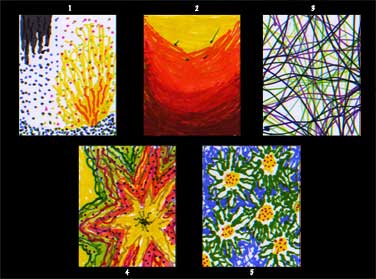>Recently, I read an article By Teresa Smith, Canwest News Service, showing a possible genetic link between mental illness and creativity.
I was most struck by a comment by Nigel Bart, a creative man with schizophrenia interviewed for the article. “When someone has a feeling that they need to create something, it’s part of who they are, it’s in their genes,” he said.
That echoes my experience. When I am brave enough to admit to my creative efforts, I find two reactions in the people around me. One is puzzlement, sometimes—but not always—accompanied by admiration. Such people can’t fathom what attracts me to creative activity. The other response I receive is conspiratorial understanding. Sometimes people glance around to see if anyone else is watching. Then they lean forward and whisper their confession. “I write,” they admit. They paint. They knit. They do something with a passion and dedication not understood by those around them.
Perhaps, as this study suggests, there are some of us who need to create. When I am part of a creative project, I feel energized and optimistic. When I put away my art supplies or conclude that there are more important things to do than write, I get crabby at best or, at worst, dive into a dark night of the soul.
Last week I gave myself a creative experiment assignment: self-portrait (but not of my physical appearance) every day for five days.
It was not an easy week to choose to do art. It was the first week of school and my daughter’s birthday was on Wednesday. I made the completion of the assignment as easy as possible. I made five rectangles on an 8.5 x 11″ sheet of paper and got out my Sharpie marker set. Each evening, I made a drawing.

Lab Notes:
Day one shows the argument between my weariness and my determination.
Day two was meant to be the weight of tiredness, but when I looked at it I felt encouraged.
Day three was chaotic exhaustion. I went to bed early.
Day four: I clearly felt better.
Day five was completed after I went for a walk and admired some flowers along my path. This piece is also notable because I used my left (non-dominant) hand much of the time.
General remarks: markers are so bold, unforgiving and precise! I hated that. I longed for subtle colors and liquid transitions. On Thursday (day four), I had an eye appointment and spent the time while my pupils dilated imagining how to have a little painting area in the corner of our living room.
I’m always adjusting to the effects of my illness. My right hand and arm are weak and tremble. My left hand and arm are stronger, but shaky and I can’t control them very well. Over the last year, I have been trying to consciously use my left hand more often (by way of training it). Pieces like the one I did on day five invite an emotional mixture of triumphant celebration and mourning.
Lessons from this experiment:
- making a drawing every day was a concerted effort.
- I felt good about them after doing them.
- markers don’t make a mess, but I struggle with their definitiveness.
Energy and optimism gave way (as they frequently and irritatingly do) to a migraine. [Something else I expect is part of my genetic predisposition; my grandmother and mother suffered them, too.]
Now that I’m recovered, I’m pondering what to do next. I wanted to tie everything up in a bow of lovely conclusion. Alas, it is not going to happen. This is art, not science, and even science experiments frequently end with more questions than answers.
I can conclude that regular creative activity is energizing to me, even though getting myself to do it is an effort and doing it can leave me overtired. (It sounds like exercise, doesn’t it?)
My next project is to do some reading and research about what others have discovered about sustaining healthy habits…


>Yes, yes, yes! This is where I am with my life. For me, creativity has been pushing its way out as a way to deal with my mental health. I am the mother of two daughters who are struggling with very different mental health issues (as well as being teenagers, which to my way of thinking, is also a mental health issue :). As my daughters fall into the "lack of mental health" pit, I struggle not to slide down with them. Creativity offers me light, life, joy, beauty, power (over my creation, never my kids), laughter and order (another unexpected benefit – my creativity expresses itself best in an ordered environment – one in which I can find the paper, the pens, etc.)
I haven't felt my creativity so forcefully for years. It seemed to push its way out a safety valve. Create or explode. Express or be swallowed up by the black cloud of depression.
How ironic. I need to do things that are childish, erratic, unusual, unexpected, goofy, and frivolous to hold on to my adult life of order, paid bills, dinners made on time, doctors appointments, school assignments reviewed, clothes washed, etc., etc., etc.
Hey Kate, thanks for thinking out loud. Your transparency helps me be honest, too.